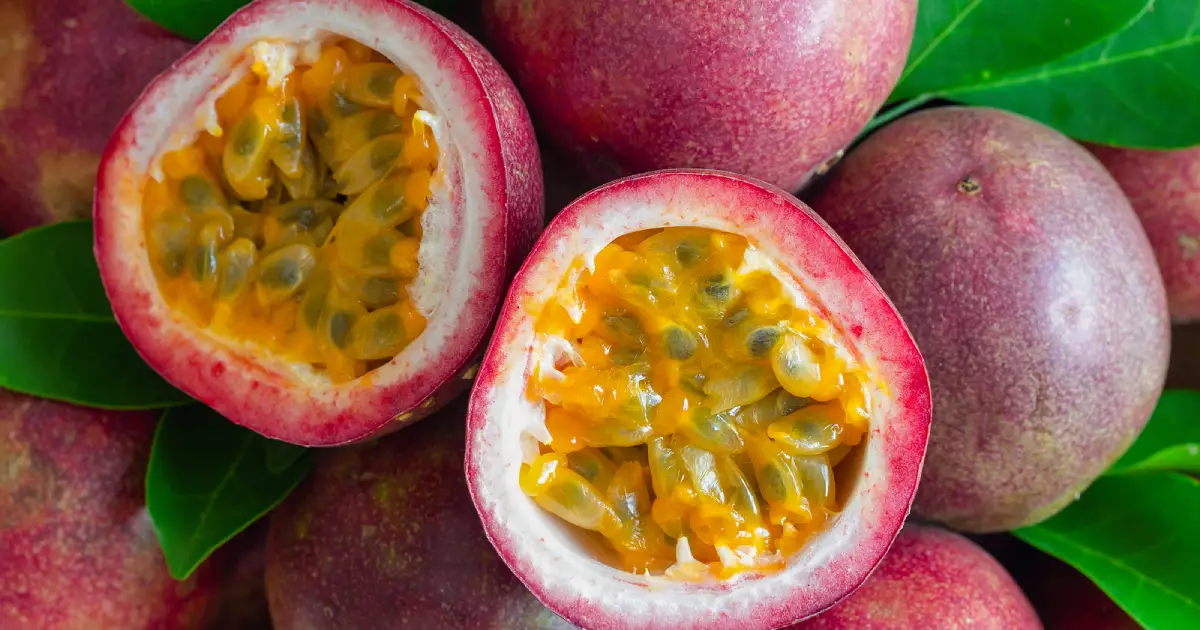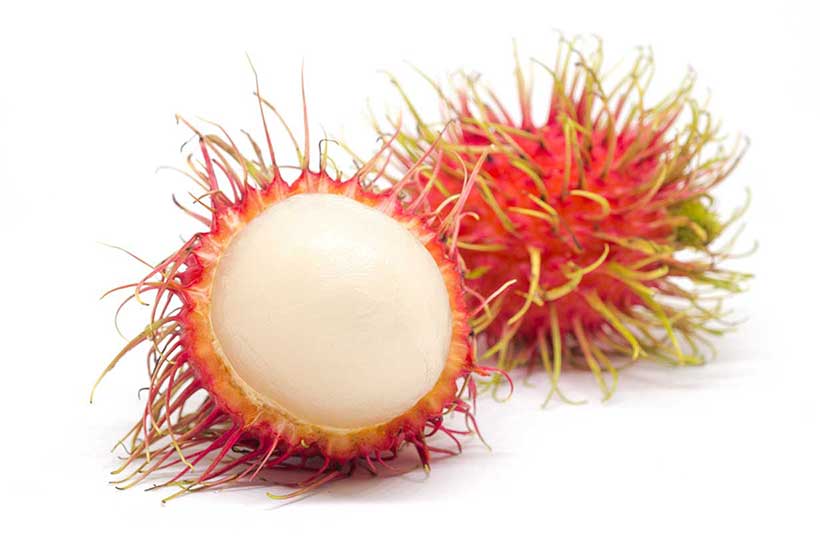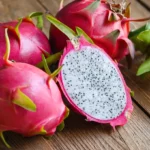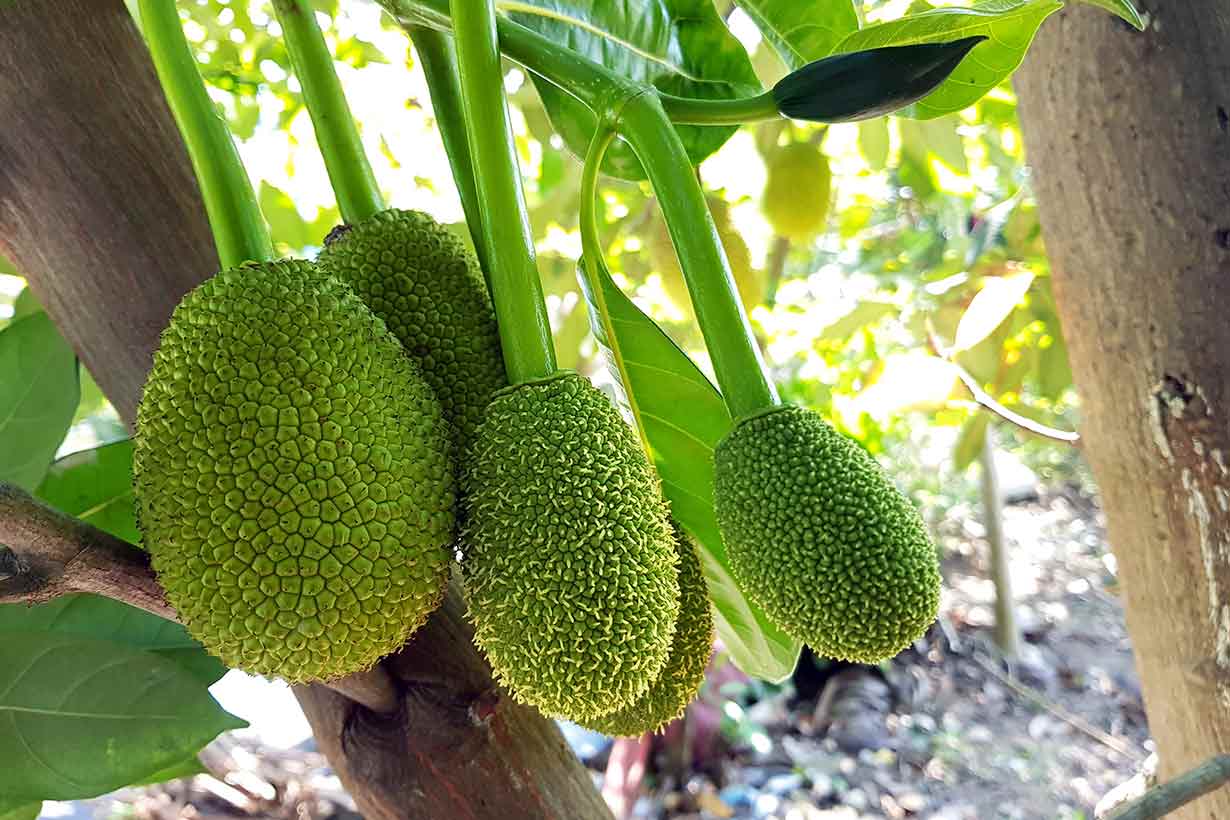Passion fruit is a sweet, tangy, and slightly tart tropical fruit that provides high amounts of fiber, vitamin C, and copper.
The fruit, known scientifically as Passiflora edulis, has also attracted scientific research due to the bioactive compounds it contains.
This article examines the full nutritional profile of passion fruit and what science says about its potential health benefits.
Table of contents
Potential Health Benefits

Here is a summary of the potential benefits passion fruit may provide, all based on recent scientific research findings.
Passion Fruit Is a Rich Source of Bioactive Compounds That May Benefit Health
Passion fruit contains plant chemicals that may provide health benefits. We can refer to these as ‘phytonutrients.’
The phytonutrients in passion fruit include:
- Carotenoids: Passion fruit contains beta-carotene and lutein, carotenoids responsible for the fruit’s yellow pigment. Also found in vegetables like carrots, these compounds may support vision and healthy eyesight.
- Flavonoids: Passion fruit has a high content of flavonoids, which are a type of polyphenol. The flavonoids present include apigenin, myricetin, luteolin, and quercetin. Findings from a 2024 systematic review found total dietary flavonoid intake was linked to a 7% decreased risk of cardiovascular disease per 500 mg/day of flavonoids, in a dose-response manner.
- Phenolic acids: The major phenolic acids in passion fruit are gallic acid and neochlorogenic acid.
- Stilbenes: Piceatannol is present in the seeds of passion fruit, belonging to the stilbene class of polyphenols.
Passion Fruit Peel Supplements May Improve Blood Sugar Control
While the evidence is limited, some studies indicate that passion fruit peel supplements may potentially help support blood sugar control:
- A 2020 randomized controlled trial involving 89 patients with type 2 diabetes found that 500 mg of yellow passion fruit flour, three times per day, reduced fasting blood sugar levels by 5.9% compared to placebo.
- This study followed an earlier 2020 systematic review of 11 studies, which demonstrated passion fruit peel flour’s effectiveness for lowering long-term blood sugar levels (HbA1c).
However, it is important to note that these benefits were seen from highly concentrated, powdered extracts of passion fruit’s inedible hard peel.
While fresh passion fruit may contain the same compounds found in the dried peel, they are present at a much less-concentrated amount.
Therefore, it is unlikely that simply eating fresh passion fruit would have these same beneficial effects.
May Benefit Heart Health By Lowering “Bad” LDL Cholesterol Levels
Limited evidence suggests that passion fruit may potentially help lower LDL cholesterol (LDL-C) levels.
Elevated LDL-C is strongly associated with an increased risk of cardiovascular death in long-term studies.
On this note, a 2022 randomized controlled trial suggests that passion fruit may have LDL-C-lowering properties.
Over eight weeks, 43 adults with high cholesterol consumed either placebo or a daily drink made from passion fruit juice and pulp with added hibiscus extract. After eight weeks, the participants consuming the passion fruit drink experienced significant reductions in LDL-C compared to baseline.
The authors suggested that the mechanism for these effects may be due to the polyphenol content of passion fruit and hibiscus.
That said, since this study used a passion fruit juice drink containing hibiscus extract, we can’t definitively state the effect was solely due to passion fruit. This is a key limitation of the study as evidence for passion fruit lowering LDL-C.
In other words, more research is necessary before strong claims can be made.
Passion Fruit Peel May Help With Osteoarthritis Symptoms
Studies on passion fruit peel supplements suggest potential benefits for improving pain and function-related osteoarthritis symptoms.
A 2025 systematic review of 23 randomized, controlled trials assessed which supplements could best improve pain and function scores in patients with osteoarthritis:
Out of 21 dietary supplements, passion fruit peel extract most significantly improved both pain and function scores.
Previous studies have concluded that the beneficial effects of passion fruit peel might be due to its “antioxidant and antiinflammatory properties,” stemming from its high polyphenol content.
However, it is important to again note that this finding applies to passion fruit extract supplements rather than the fresh fruit.
Nutrition Facts
Now that we have looked at some of the research on passion fruit, let’s examine the fruit’s full nutritional values.
Based on USDA data for raw purple passion fruit, the following tables present the nutritional profile of passion fruit per 100g and per 18g single fruit.
Percent daily values (% DV) are based on a 2,000 calorie diet.
Calories and Macronutrients
| Nutrient | Per 100g | Per 18g passion fruit |
|---|---|---|
| Calories | 97 kcal | 18 kcal |
| Carbohydrates | 23.4g (9% DV) | 4.21g (2% DV) |
| Fiber | 10.4g (37% DV) | 1.87g (7% DV) |
| Sugars | 11.2g | 2.02g |
| Fat | 0.7g (1% DV) | 0.13g (<1% DV) |
| Saturated fat | 0.06g (<1% DV) | 0.01g (<1% DV) |
| Monounsaturated fat | 0.09g | 0.02g |
| Polyunsaturated fat | 0.41g | 0.07g |
| Omega-3 | <0.01g | <0.01g |
| Omega-6 | 0.41g | 0.07g |
| Protein | 2.2g (4% DV) | 0.4g (1% DV) |
| Cholesterol | 0 mg (0% DV) | 0 mg (0% DV) |
As the table shows, passion fruit is a significant source of dietary fiber. It provides 37% of the daily value per 100 grams — even one small 18g fruit offers 7% DV.
Passion fruit is primarily a source of carbohydrates, containing very little fat or protein.
Vitamins
| Vitamin | Per 100g | Per 18g passion fruit |
|---|---|---|
| Vitamin A (RAE) | 64 mcg (7% DV) | 11.5 mcg (1% DV) |
| Vitamin C | 30 mg (33% DV) | 5.4 mg (6% DV) |
| Vitamin D | 0 mcg (0% DV) | 0 mcg (0% DV) |
| Vitamin E | 0 mg (0% DV) | 0 mg (0% DV) |
| Vitamin K | 0.7 mcg (1% DV) | 0.13 mcg (<1% DV) |
| Thiamin (B1) | 0 mg (0% DV) | 0 mg (0% DV) |
| Riboflavin (B2) | 0.13 mg (10% DV) | 0.02 mg (2% DV) |
| Niacin (B3) | 1.5 mg (9% DV) | 0.27 mg (2% DV) |
| Pantothenic acid (B5) | — | — |
| Vitamin B6 | 0.1 mg (6% DV) | 0.02 mg (1% DV) |
| Folate (B9) | 14 mcg (4% DV) | 2.52 mcg (1% DV) |
| Vitamin B12 | 0 mcg (0% DV) | 0 mcg (0% DV) |
| Choline | 7.6 mg (1% DV) | 1.37 mg (<1% DV) |
Passion fruit provides high amounts of vitamin C and moderate amounts of vitamins A, B2, B3, and B6 per 100 grams.
However, a single 18g fruit only provides a moderate amount of vitamin C and low levels of other vitamins.
Minerals
| Mineral | Per 100g | Per 18g passion fruit |
|---|---|---|
| Calcium | 12 mg (1% DV) | 2.16 mg (<1% DV) |
| Iron | 1.6 mg (9% DV) | 0.29 mg (2% DV) |
| Magnesium | 29 mg (7% DV) | 5.22 mg (1% DV) |
| Phosphorus | 68 mg (5% DV) | 12.2 mg (1% DV) |
| Potassium | 348 mg (7% DV) | 62.6 mg (1% DV) |
| Sodium | 28 mg (1% DV) | 5.04 mg (<1% DV) |
| Zinc | 0.1 mg (1% DV) | 0.02 mg (<1% DV) |
| Copper | 0.09 mg (10% DV) | 0.02 mg (2% DV) |
| Manganese | — | — |
| Selenium | 0.6 mcg (1% DV) | 0.11 mcg (<1% DV) |
Purple vs. Yellow Passion Fruit
While purple passion fruits are more common, there is also a yellow variety of passion fruit.
The two are similar, but they have slightly different characteristics:
- Purple passion fruit: The more common purple variety of passion fruit has a sweeter taste and a milder overall flavor. It is primarily eaten as a whole fruit.
- Yellow passion fruit: Known scientifically as Passiflora edulis f. flavicarpa, yellow passion fruit has higher acidity levels and a tarter, more tangy flavor. While you may be able to find it for sale as a whole fruit, it is often used for producing passion fruit juice.
How Do They Compare Nutritionally?
To directly compare purple and yellow passion fruit, we would ideally use the most reputable data—USDA data—for whole fruit varieties of both.
Unfortunately, the USDA does not have an entry for whole yellow passion fruit. However, it does provide nutritional data for purple passion fruit juice and yellow passion fruit juice.
Based on this USDA data, the following table shows how the two juices compare for calories, macronutrients, and vitamin C per 100 grams:
| Nutrient | 100g Purple passion fruit juice | 100g yellow passion fruit juice |
|---|---|---|
| Calories | 51 kcal | 60 kcal |
| Carbohydrates | 13.6g | 14.4g |
| Fiber | 0.2g | 0.2g |
| Sugars | 13.4g | 14.2g |
| Fat | 0.05g | 0.18g |
| Protein | 0.39g | 0.67g |
| Vitamin C | 29.8 mg (33% DV) | 18.2 mg (20% DV) |
The data in the table indicates that purple passion fruit is notably higher in vitamin C, but contains fewer calories and less sugar.
Potential Drawbacks
Although it is not a common cause of allergic reactions, there is the rare possibility of a passion fruit allergy — as with any food.
A 2024 review of ‘latex-fruit syndrome’ found evidence from two studies of people with latex-fruit syndrome having allergic reactions to passion fruit.
Latex-fruit syndrome is characterized by people with an allergy to latex experiencing cross-reactivity to allergens found in certain plants.
However, the Asthma and Allergy Foundation of America note that the most common reactive foods for individuals with a latex allergy are banana, chestnut, and kiwi, with passion fruit being “less common.”
Individuals with a latex allergy may wish to consult their healthcare provider before trying passion fruit.
How To Use
When you have a passion fruit in front of you, you will find a small round fruit with a hard outer shell.
Those first encountering passion fruit may be unsure how to open it, but it’s relatively simple:
- Cut it: With a sharp knife, carefully slice the passion fruit in half down the middle.
- Eat it: Grab a teaspoon and scoop some of the soft, yellow pulp out of each half. You can either eat it directly with a spoon, or scoop the pulp into a bowl and eat it that way.
For those who enjoy smoothies, you could also try mixing the pulp into your favorite smoothie for a tangy burst of flavor.
Summary
Overall, passion fruit offers a good amount of fiber, vitamin C, and polyphenols for relatively few calories. However, a single passion fruit only weighs about 18 grams, which limits the amount of nutrients you get.
While some scientific research suggests it may have health benefits, we should be careful not to overstate health claims about the fruit.
This is because much of the claims you might see are based on studies about high-strength supplements made from passion fruit peel, which isn’t edible.
For more on fruit, see this complete nutritional guide to 55 types of fruit.
References
Full List of Scientific References
(Click to Expand)
All citations used within this article are listed below, with full details for each scientific source.
- Zilanir Carvalho Pereira et al. (2023). Passion fruit (Passiflora spp.) pulp: A review on bioactive properties, health benefits and technological potential. View study in the Food Research International journal
- Lisa M Wilson et al. (2021). The effect of lutein/zeaxanthin intake on human macular pigment optical density: A systematic review and meta-analysis. View study in the Advances in Nutrition journal
- Tianze Li et al. (2022). Total dietary flavonoid intake and risk of cardiometabolic diseases: A dose-response meta-analysis of prospective cohort studies. View study in the Critical Reviews in Food Science and Nutrition journal
- Getu Weyya et al. (2024). Passion fruit (Passiflora edulis Sims) by-products as a source of bioactive compounds for non-communicable disease prevention: extraction methods and mechanism of action: a systematic review. View study in the Frontiers in Nutrition journal
- Danilo Ferreria de Sousa et al. (2020). Cost-effectiveness of passion fruit albedo versus turmeric in the glycemic and lipaemic control of people with type 2 diabetes: Randomized clinical trial. View study in the Journal of the American College of Nutrition
- Danilo Ferreria de Sousa et al. (2020). Effectiveness of passion fruit peel flour (Passiflora edulis L.) versus turmeric flour (Curcuma longa L.) on glycemic control: Systematic review and meta-analysis. View study in the Current Diabetes Reviews journal
- Eujene Jung et al. (2022). Serum cholesterol levels and risk of cardiovascular death: A systematic review and a dose-response meta-analysis of prospective cohort studies. View study in the International Journal of Environmental Research and Public Health
- Jurairat Khongrum et al. (2022). Antidyslipidemic, antioxidant, and anti-inflammatory effects of jelly drink containing polyphenol-rich roselle calcyces extract and passion fruit juice with pulp in adults with dyslipidemia: A randomized, double-blind, placebo-controlled trial. View study in the Oxidative Medicine and Cellular Longevity journal
- Chang-shun Chen et al. (2025). Effects of dietary supplements on patients with osteoarthritis: A systematic review and network meta-analysis. View study in the Journal of Integrative Medicine
- Reza Farid et al. (2010). Oral intake of purple passion fruit peel extract reduces pain and stiffness and improves physical function in adult patients with knee osteoarthritis. View study in the Nutrition Research journal
- USDA (n.d.). Passion-fruit, purple, raw. View USDA data
- USDA. (n.d.). Passion-fruit juice, purple, raw. View USDA data
- USDA. (n.d.). Passion-fruit juice, yellow, raw. View USDA data
- Weronika Gromek et al. (2024). Revisiting latex-fruit syndrome after 30 years of research: A comprehensive literature review and description of two cases. View study in the Journal of Clinical Medicine
- Asthma and Allergy Foundation of America (AAFA). (2024). Latex allergy. View AAFA’s latex allergy review






